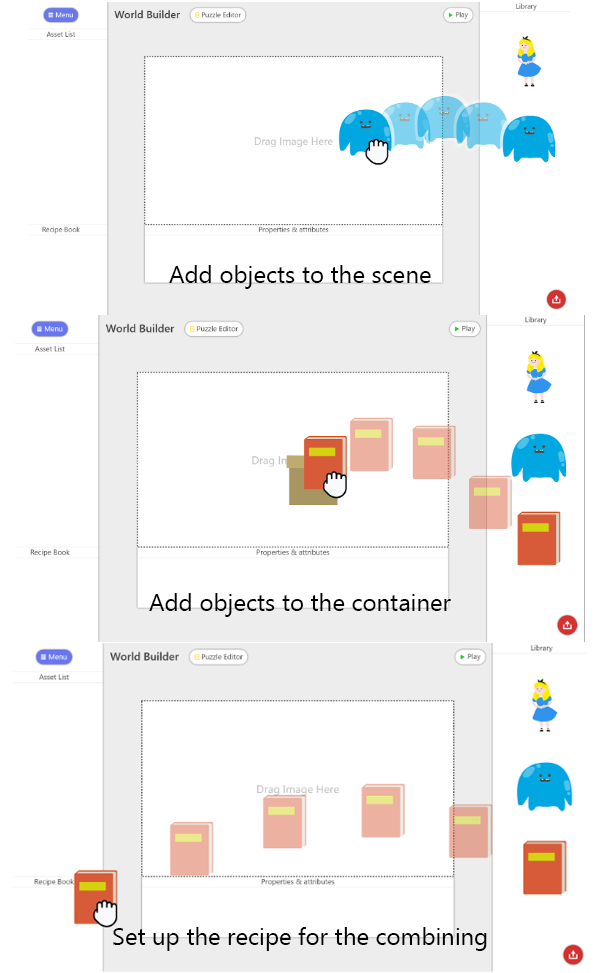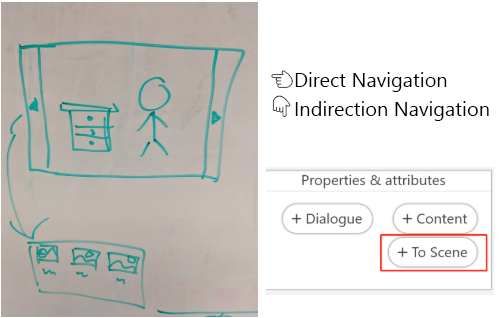This week, after scheduling through the rest of the semester, we realized that the schedule was a little bit tight. So this week, we are doing the design work and the development work at the same time.
Development
In week 7, we managed to implement our MVP build, which is to remake the first airplane puzzle from Sabrina and Dave’s Adventure. With the completion of that MVP game, our tool was able to create an adventure game with our progressive puzzle builder. This week, we were expanding the puzzle support list from only supporting the exact puzzle in MVP game to supporting all puzzles without adding new features in the world builder.
The puzzles include:
- Get an item by collecting it in the scene
- Go to a location through an object
- Go to a location through an object locked by a key
- Go to a location through an object locked by password key
- Go to a location through an object triggered by a switch
- Remove an object by using an object on it
With those puzzles, we now have the basic features of a game creation tool, and it is able to create some simple adventure games like this:
Design
Besides development, we were also doing the design work for the tool. This week, we were designing the world builder. The main features of the world builder are:
- Decorating the scene
- Navigating between scenes
- Storytelling
- Description
- Narrative
- Conversation
We were designing the look and the interactions in the world builder based on these features.
Decorating the scene
There are four types of objects can be added into the game, which are objects in the scene, objects in the container, objects held by a character and objects needed to be crafted. Interaction-wise, there are three interactions, one for adding the objects to the scene, one for adding the objects to a container or a character and one for setting up the recipe for the combining. Since the combining result does not belong to any scene, our first design is to have a recipe book which is like the rule book for the world where the user can set up how everything can be crafted.

Navigating between scenes
In a point-and-click adventure game, there are two ways to navigate between scenes: by clicking arrows (direct navigation) or by clicking specific objects (like doors or ladders, indirect navigation). We also designed two ways of setting up the navigation relation between two scenes.

Conversations
Adventure games are also about stories. We want the users to have different ways to tell their stories. There are three ways to tell stories: narratives (direct), object descriptions (indirect) and conversations with NPCs (indirect). For the first two, they can be the properties of the scene and the object, and for the conversation system, which was something we wanted to do at the beginning of the semester, we were now thinking about simplify it due to the schedule and the scope.